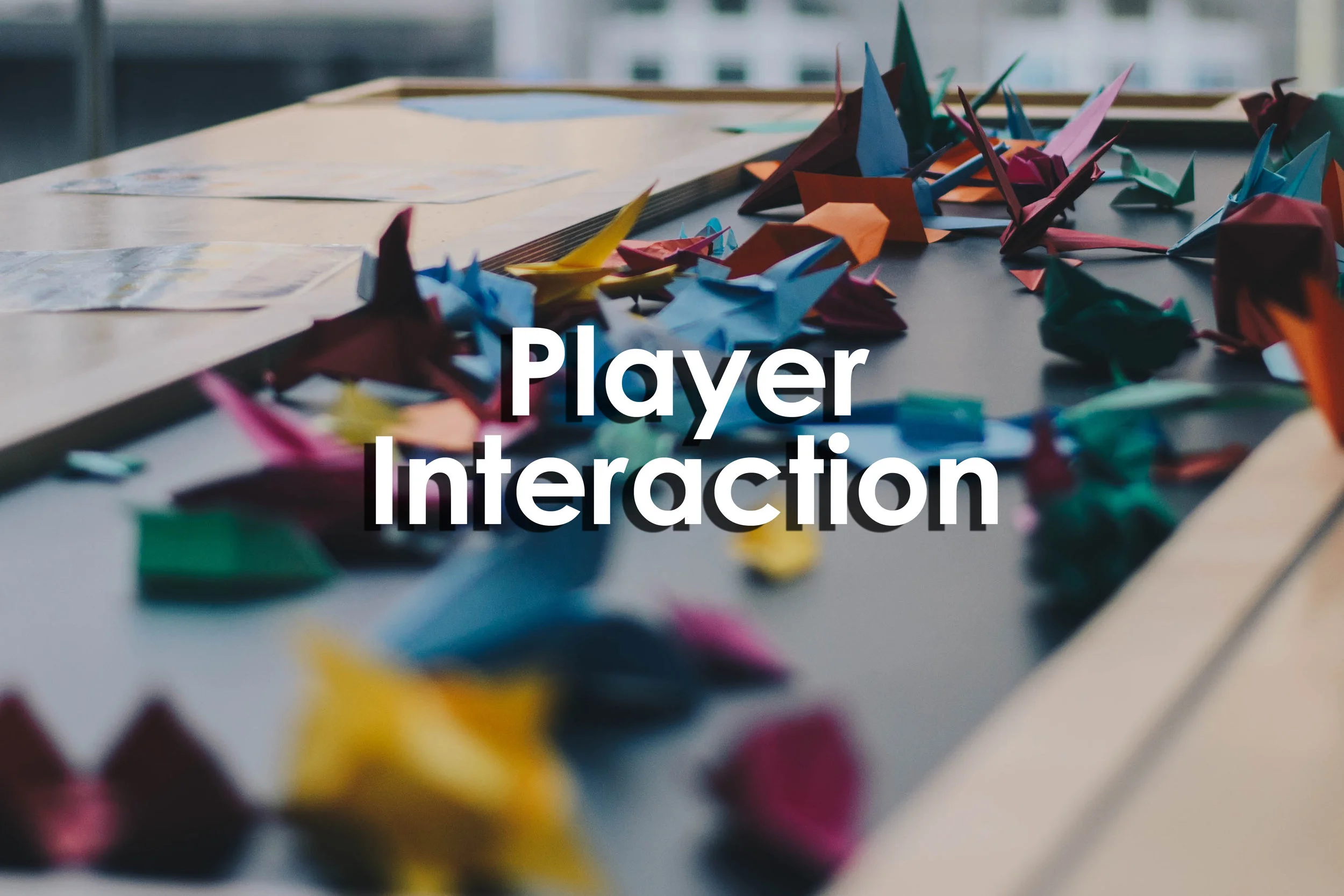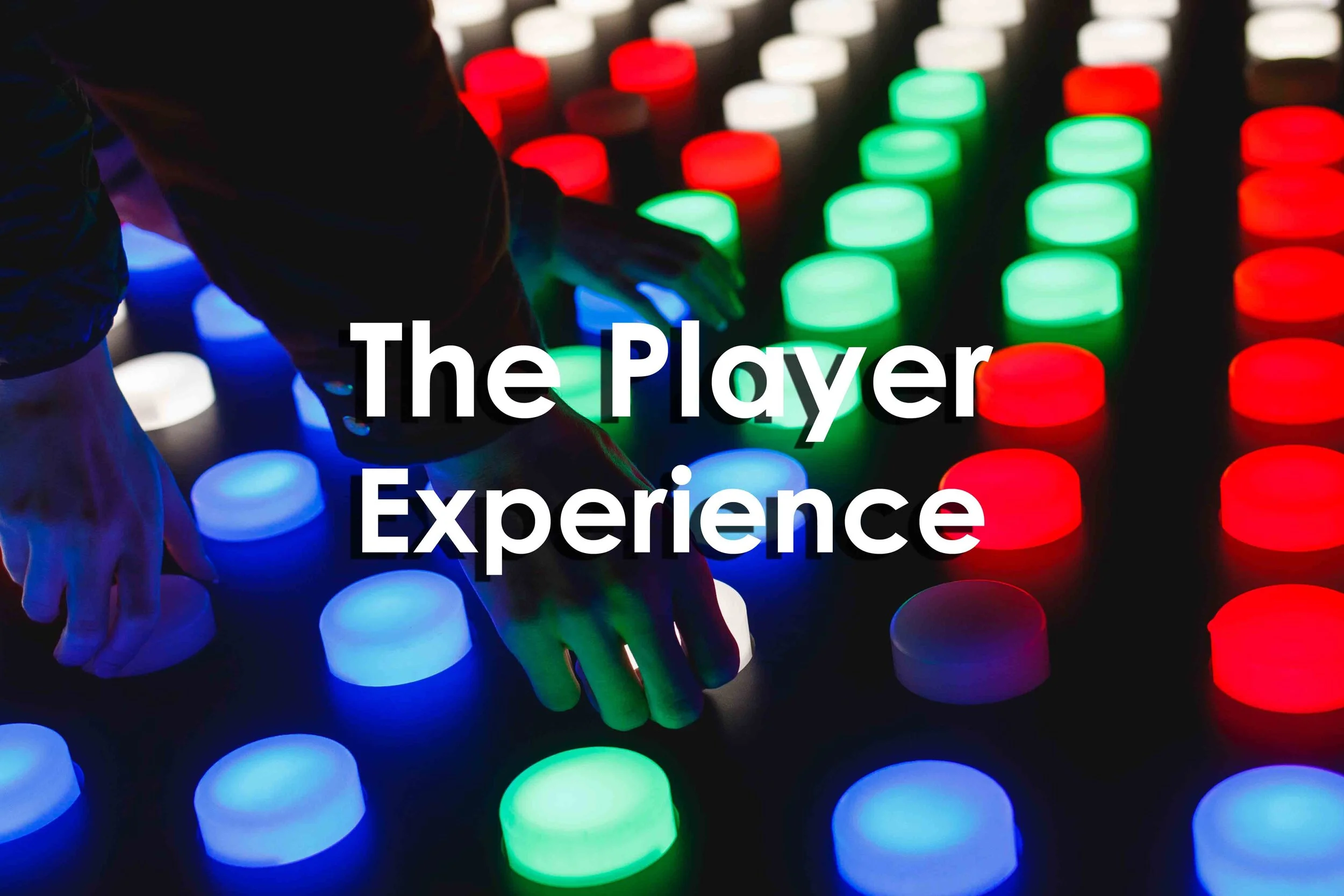Player interaction is an important characteristic to consider when designing games. The designer has to answer the questions “How is the player going to interact with the game? How will the player interact with other players? what kind of decisions can the player make?” All of these questions should be answered when designing for player interaction. What specific role does player interaction play in game design?
Read MoreThe player experience is something that we all shoot for in game design. That’s because the player experience is what the player goes through when they play the game. That experience can be as simple as gamified mechanics in gamification; a games-based learning class; a simulation; or a serious game. The player experience dictates how our creation, our game, is received by our users.
Read MoreBoth gamification and games-based learning have entered popular culture. That means there’s been debate and misunderstanding about what they are; what they’re used for; and what differentiates them. Some people want to use games-based learning when they mean gamification. Others want to use gamification when they should use games-based learning. Just what is the difference between games-based learning and gamification?
Read MoreThere’s a special appeal to playing really hard games. Games were you have to grind it out over time to get anywhere. A type of those really hard games are called roguelikes. But what makes them hard? What makes them appealing? Most importantly: how can we use the difficulty of roguelike games for games-based learning?
Read MoreGames are a type of work if you think about it. We invest our time in games. We give games our attention and our mental capacities. But why do we do that?
What makes play work? The answer is that great work is also great play. Great play makes us more productive. That means that great games can also help us become better, and more productive, individuals.
Let’s examine game play as work, and why we continue to play games, despite difficulties to the contrary. Part of why we continue to play is because we enjoy the feelings of “competent engagement” that we get from games. This allows us to get more serious about our work. It also affects how we approach game play.
Read MoreNarratives, toys, puzzles, and games all share some similar characteristics. But what makes them different and how do games tie them all together?
Read MoreHelping a player make informed and meaningful choices is part of what makes good games great. Those meaningful choices provide the player weight and substance to their player experience. But often in the pursuit of creating interactive and engaging experiences, we often fall into the trap of creating meaningless choices.
Read MoreIt’s no surprise when someone tells you that games are fun. Fun is one of the reasons that we play games. But what makes games fun and how can incorporate that into our designs?
Read MoreHave you experienced that feeling of triumph before? The one you get from completing a really difficult level or beating an experienced opponent? You know, when you throw your hands up over your head in triumph? That feeling is called fiero. Fiero is highly addictive and highly engaging. Often that feeling comes after we’ve become completely engrossed in the game. That’s called being a state of “flow.”
Read MoreOne of the most characteristic things about today’s crop digital games is the grind. The grind, grindyness, or grinding aspect of some games is an aspect that most gamers have experienced at one time or another. But what does that mean? How do players experience it? How can designers and educators of games-based learning address the grind in our designs?
Read MoreGames and students have many things in common. One of the biggest commonalities are the type’s people they cater to. There will be the first year introductory courses that enroll mostly college freshmen. There are expansive games like Fortnite that appeal to competitive gamers. In between there are a plethora of different options available for many different types of students and gamers alike.
As a designer and instructor it’s best to understand our players and students. The better we understand them, the better able we are to cater to their needs and fully engage them in learning or play.
Read MoreBlack Mirror’s season five premiere Striking Vipers has an oddly coincidental connection to games and the “lusory agreement” the players follow when playing them.
Read MoreGames and simulations are two things that seem talked about in the same circles. Sometimes they even get misinterpreted for one another. They do share some of the same characteristics; but games and simulations are different from one another.
Read MoreFeedback is an important part of the learning process. Feedback is also really important for games to be engaging and fun. Feedback in education is based on providing the student with tangible information that they can use to improve their learning, knowledge grasp, or retention. Feedback in a game is provided to the player in order to viscerally show them the impact of their actions.. The two can be combined in order to both meet learners’ outcomes as well as provide some interesting and engaging feedback in a games-based learning environment.
Read MoreGamification is supposed to be fun. That’s why businesses, organizations and individuals use it on a daily basis. Why else would someone play games? But what are the ethics of gamification? What stops one business or organization from doing something nefarious? Is there a limit to gamification? Should it be up to academics, the government, or individuals to police how gamification is used?
Read MoreFormal game structures are the cornerstone on which game designers build their experiences. These structures shape what the designer intends to convey and what the player hopes to takeaway. Recognizing these formal structures helps your players define their experience.
Read MoreStructuring learning is one of the hardest things for an instructor to do. Sometimes that means reusing a syllabus. Other times you have to fit 16 weeks’ worth of content into 10 weeks. In either case, making sure that your students meet all course learning outcomes in your course’s time frame can be difficult.
Read MoreGames are currently being used for learning and education. Some of the most common practices are gamification, serious games, and games-based learning. Though that is not what many people see in practice. It seems that some of the most popular interpretations for learning games focus on scoreboards keeping track of players’ progress; playful feedback in activities; and tracking of students’ goals and achievements.
Read MoreThere are many types of games available for people to play and enjoy. One of the most familiar and heartwarming ones are narrative driven games. These are games where the player is the protagonist. They represent a singular avatar and experience the world and explore paths in the story together.
Read MoreSerious games are games. But they’ve been designed with an educational purpose. Serious games were not created to be played for amusement or entertainment.
Read More



















